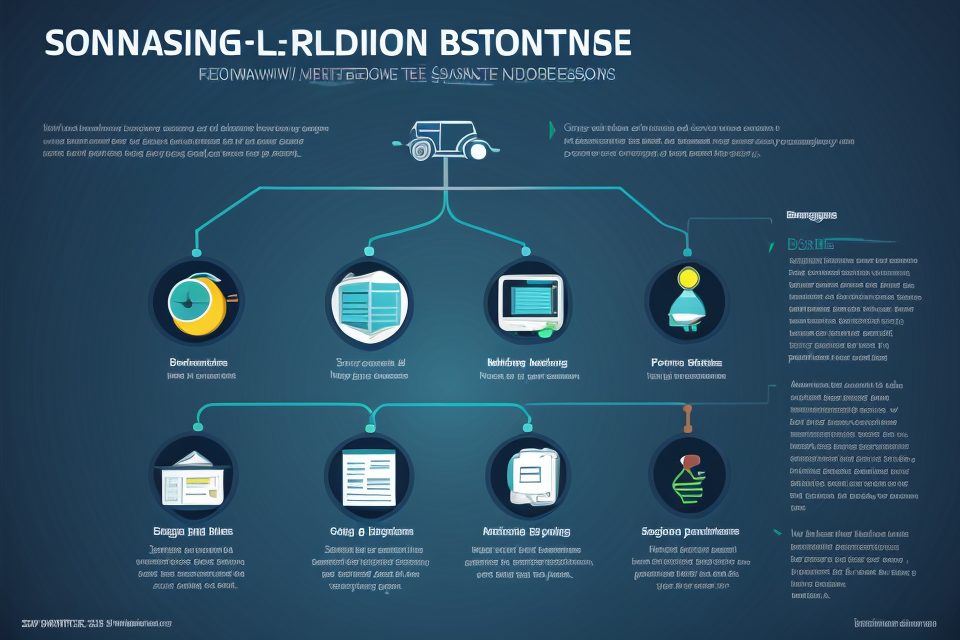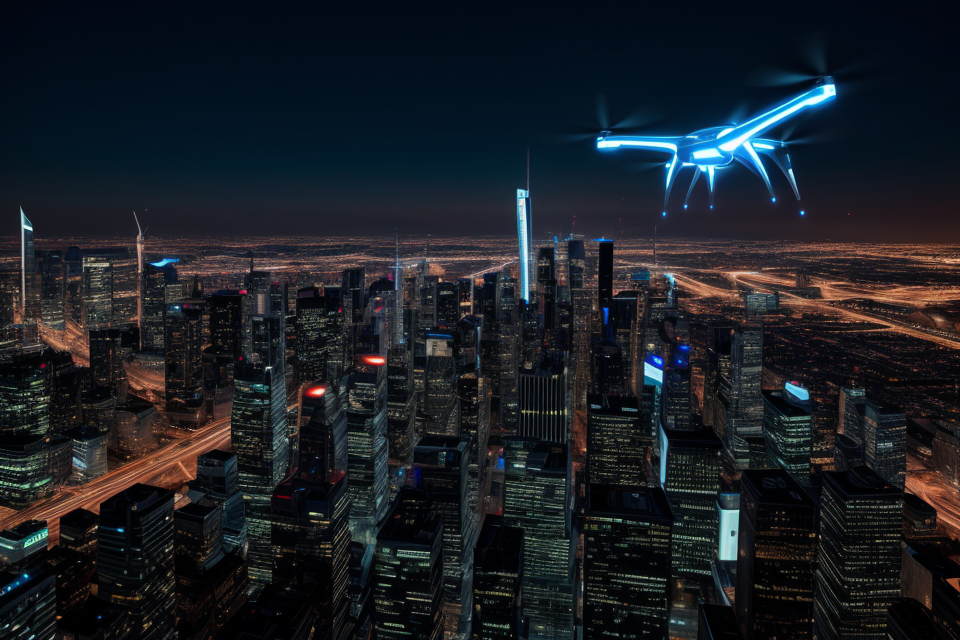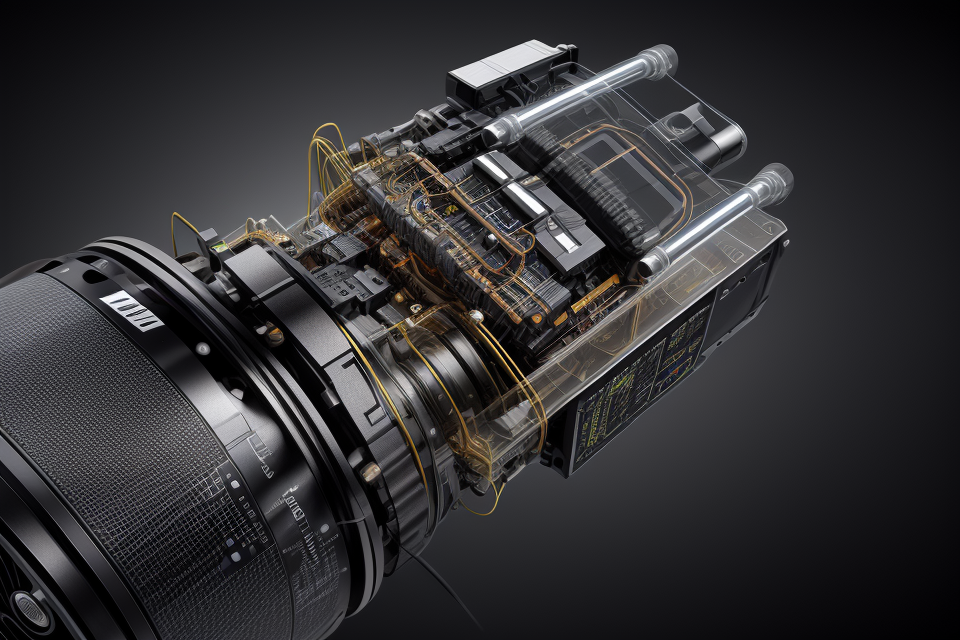
Sensors are a revolutionary technology that is rapidly transforming our world. From smart homes to autonomous vehicles, sensors are everywhere and are changing the way we live, work and communicate. But what does the future hold for this game-changing technology? In this article, we will explore how sensors will continue to revolutionize our world in the future, from improving healthcare to enhancing our environment. So buckle up and get ready to discover the incredible potential of sensors!
Sensors have already begun to revolutionize our world in a variety of ways, and this trend is likely to continue and accelerate in the future. From smart homes and cities to personalized healthcare and transportation, sensors are enabling new levels of efficiency, convenience, and safety. As sensor technology continues to advance, we can expect to see even more innovative applications and integration across industries, leading to a more connected, sustainable, and prosperous future for all.
The Future of Sensor Technology
Advances in Sensor Design and Functionality
Sensor technology has come a long way since its inception, and the future of sensor technology is poised for exponential growth. In the realm of sensor design and functionality, there are several exciting advancements on the horizon.
The Integration of AI and Machine Learning Algorithms
One of the most significant advancements in sensor technology is the integration of artificial intelligence (AI) and machine learning algorithms. By leveraging the power of AI, sensors can now learn from data and make predictions about future events. This capability allows sensors to become more intelligent and adaptive, enabling them to better detect and respond to changes in their environment.
For example, in the healthcare industry, AI-powered sensors can analyze patient data and detect early signs of disease, allowing for earlier intervention and improved patient outcomes. In the transportation industry, AI-powered sensors can analyze traffic patterns and optimize routes, reducing congestion and improving safety.
The Development of Wearable and Implantable Sensors
Another exciting development in sensor technology is the development of wearable and implantable sensors. These sensors are designed to be integrated into clothing or implanted in the body, allowing for continuous monitoring of vital signs and other metrics.
Wearable sensors, such as fitness trackers, can monitor a person’s activity level, heart rate, and sleep patterns, providing valuable data for improving overall health and fitness. Implantable sensors, such as cochlear implants or insulin pumps, can provide life-changing benefits for individuals with hearing loss or diabetes.
Improved Sensitivity and Selectivity
In addition to AI and machine learning algorithms, sensors are also becoming more sensitive and selective, allowing them to detect smaller changes in their environment. This improvement is critical for applications such as environmental monitoring, where small changes in air quality or temperature can have significant impacts on public health and safety.
Improved sensitivity and selectivity are also important for medical applications, where sensors must be able to detect subtle changes in patient data to provide early warnings of potential health issues. For example, glucose sensors that can detect small changes in blood sugar levels can help diabetics manage their condition more effectively.
Overall, the future of sensor technology is bright, with exciting advancements in design and functionality on the horizon. As sensors become more intelligent, wearable, and selective, they will play an increasingly important role in revolutionizing our world.
Applications of Sensors in Various Industries
Healthcare
Sensors are playing an increasingly important role in healthcare, revolutionizing the way healthcare professionals diagnose and treat patients. In the future, sensors will continue to improve the accuracy and speed of medical diagnoses, monitor patient conditions in real-time, and provide personalized healthcare based on individual patient data. Some examples of sensor applications in healthcare include:
- Wearable fitness trackers that monitor heart rate, steps taken, and other vital signs, providing valuable data for patients and healthcare professionals to track health and fitness progress.
- Smart implants that can monitor and transmit data on various bodily functions, such as glucose levels in diabetic patients or heart rhythms in patients with heart conditions.
- Smart hospital beds that can adjust to a patient’s position and provide real-time data on a patient’s vital signs, allowing healthcare professionals to monitor patients more effectively.
Agriculture
Sensors are also revolutionizing the agriculture industry by providing farmers with real-time data on soil moisture, temperature, and other environmental factors. This data can be used to optimize crop growth, reduce water usage, and improve overall crop yields. Some examples of sensor applications in agriculture include:
- Soil moisture sensors that can provide farmers with real-time data on soil moisture levels, allowing them to adjust irrigation systems and optimize water usage.
- Temperature sensors that can monitor environmental conditions, such as temperature and humidity, to ensure optimal growing conditions for crops.
- Crop sensors that can monitor plant health and provide data on factors such as leaf wetness, temperature, and humidity, allowing farmers to identify and address potential issues before they become serious problems.
Manufacturing
Sensors are also transforming the manufacturing industry by providing real-time data on production processes, allowing manufacturers to optimize efficiency and reduce waste. Some examples of sensor applications in manufacturing include:
- Quality control sensors that can detect defects in products, ensuring that only high-quality products are shipped to customers.
- Predictive maintenance sensors that can detect potential equipment failures before they occur, reducing downtime and maintenance costs.
- Energy efficiency sensors that can monitor and optimize energy usage in manufacturing facilities, reducing energy costs and carbon emissions.
Transportation
Sensors are also playing an increasingly important role in the transportation industry, improving safety, efficiency, and environmental sustainability. Some examples of sensor applications in transportation include:
- Automatic emergency braking systems that use sensors to detect obstacles and other vehicles, preventing accidents and reducing the severity of collisions.
- Adaptive cruise control systems that use sensors to adjust vehicle speed based on traffic conditions, reducing fuel consumption and emissions.
- Traffic management systems that use sensors to monitor traffic flow and adjust traffic signals in real-time, reducing congestion and improving overall traffic efficiency.
Environmental monitoring
Sensors are also being used to monitor and collect data on environmental factors such as air quality, water quality, and climate change. This data can be used to inform policy decisions, improve environmental management, and protect natural resources. Some examples of sensor applications in environmental monitoring include:
- Air quality sensors that can monitor pollutants such as nitrogen oxides, particulate matter, and carbon monoxide, providing valuable data for city planners and policymakers to improve air quality.
- Water quality sensors that can monitor water temperature, pH levels, and other environmental factors, providing data for water management agencies to ensure safe and sustainable water use.
- Climate sensors that can monitor temperature, precipitation, and other climate factors, providing data for researchers and policymakers to inform climate change policies and mitigation strategies.
The Role of Sensors in Shaping the Future of Smart Cities
Sensors are poised to play a crucial role in shaping the future of smart cities. As urban populations continue to grow, cities are faced with the challenge of managing increasingly complex systems. Sensors can help address these challenges by providing real-time data that can be used to optimize various aspects of city life. In this section, we will explore the role of sensors in four key areas: traffic management, energy efficiency, waste management, and public safety.
Traffic Management
One of the most significant challenges facing smart cities is managing traffic congestion. According to a report by the World Economic Forum, traffic congestion costs the global economy $1 trillion annually in lost productivity and fuel consumption. Sensors can help alleviate this problem by providing real-time data on traffic flow, congestion, and accidents. This data can be used to optimize traffic signals, provide real-time navigation information to drivers, and identify areas where traffic calming measures may be necessary.
In addition to reducing congestion, sensor technology can also be used to improve road safety. By detecting potential hazards such as potholes and broken road surfaces, sensors can alert maintenance crews to address these issues before they become serious problems.
Energy Efficiency
Energy consumption is another area where sensors can make a significant impact. According to the International Energy Agency, buildings account for 32% of global energy consumption, and 60% of this energy is wasted through inefficiencies. Sensors can help reduce this waste by providing real-time data on energy usage, occupancy, and environmental conditions.
For example, sensors can be used to automate lighting systems, adjust heating and cooling systems based on occupancy, and detect leaks and other energy inefficiencies. By optimizing energy usage, cities can reduce their carbon footprint and save money on energy costs.
Waste Management
Waste management is another area where sensors can have a significant impact. According to the United Nations, the world generates 2.01 billion tonnes of municipal solid waste annually, with urban areas generating 1.33 billion tonnes of this waste. Sensors can help optimize waste collection routes, reduce littering, and improve recycling rates.
For example, sensors can be used to detect when garbage bins are full and alert waste management crews to empty them. This can reduce the amount of time crews spend driving around cities and improve the efficiency of waste collection. Sensors can also be used to detect littering and alert authorities to areas where littering is a problem.
Public Safety
Finally, sensors can also play a role in improving public safety. According to a report by the Global Peace Index, crime rates have increased in many cities around the world. Sensors can help reduce crime by providing real-time data on criminal activity, traffic violations, and other safety concerns.
For example, sensors can be used to detect gunshots and alert authorities to potential shootings. They can also be used to detect traffic violations and optimize traffic flow to reduce the risk of accidents. By providing real-time data on safety concerns, sensors can help cities make data-driven decisions to improve public safety.
The Ethical Implications of Widespread Sensor Use
Privacy Concerns
- The potential for government surveillance
- Governments around the world have been known to use sensors for surveillance purposes, leading to concerns about privacy and civil liberties. With the widespread use of sensors, it is possible for governments to collect vast amounts of data on individuals, which can be used to monitor their behavior and movements.
- In some cases, governments have been accused of using sensors for mass surveillance, monitoring entire populations rather than just specific individuals. This has led to fears that governments are violating the privacy rights of their citizens and eroding democratic values.
- The use of sensors for mass surveillance
- Mass surveillance is a term used to describe the collection of data on a large scale, often by governments or other powerful organizations. This can include the collection of data from sensors, as well as other sources such as social media and communication networks.
- Mass surveillance can be seen as a violation of privacy rights, as it allows governments and other organizations to collect and analyze vast amounts of data on individuals without their knowledge or consent. This can be particularly concerning in countries with a history of political repression or human rights abuses.
- The need for robust data protection and privacy laws
- As sensors become more widespread, it is becoming increasingly important to protect the privacy of individuals. This means that robust data protection and privacy laws are needed to ensure that individuals’ data is not misused or abused by governments or other organizations.
- In many countries, there are already laws in place to protect individuals’ privacy, but these laws may need to be updated to reflect the growing use of sensors and other technologies. It is important that these laws are robust and effective in protecting individuals’ privacy, as the consequences of a failure to do so could be severe.
The Digital Divide
The rapid advancement of sensor technology has the potential to revolutionize various aspects of our lives. However, this revolution is not without its ethical concerns. One of the primary concerns is the digital divide, which refers to the gap between those who have access to advanced technologies and those who do not. This divide has significant implications for marginalized communities and highlights the need for equitable access to sensor technology.
- The risk of leaving behind marginalized communities:
The digital divide can lead to the exclusion of marginalized communities from the benefits of sensor technology. These communities may lack access to the necessary infrastructure, such as internet connectivity, or the financial resources to purchase advanced technologies. As a result, they may be left behind in the digital revolution, further exacerbating existing social and economic inequalities. - The need for equitable access to sensor technology:
Ensuring equitable access to sensor technology is essential to prevent the digital divide from widening. This requires a concerted effort from governments, non-governmental organizations, and the private sector to provide affordable and accessible sensor technologies to marginalized communities. It also involves investing in infrastructure, such as internet connectivity, to ensure that these communities can fully benefit from sensor technology. - Strategies for bridging the digital divide:
There are several strategies that can be employed to bridge the digital divide and ensure equitable access to sensor technology. One approach is to provide subsidies or other financial incentives to make advanced technologies more affordable for marginalized communities. Another strategy is to invest in community-based programs that provide training and support to help these communities use sensor technology effectively. Additionally, public-private partnerships can be established to provide access to sensor technology and related services, such as data analytics, to marginalized communities.
The Future of Sensor Integration with Other Technologies
Integration with the Internet of Things (IoT)
The Importance of Interoperability Standards
As the number of connected devices continues to grow, ensuring that these devices can communicate with one another is crucial. Interoperability standards provide a framework for sensor integration with the IoT, enabling seamless communication and data exchange between devices from different manufacturers. These standards help to facilitate the development of innovative applications and services that rely on sensor data.
The Role of Sensors in Creating a More Connected World
Sensors play a vital role in enabling the IoT by providing real-time data on various environmental conditions, such as temperature, humidity, and light levels. By integrating sensors into everyday objects, the IoT can provide a more personalized and connected experience for users. For example, smart homes equipped with sensors can automatically adjust the temperature and lighting based on the time of day and the presence of occupants. This level of connectivity has the potential to transform industries such as healthcare, transportation, and agriculture, by enabling more efficient and effective data collection and analysis.
Potential Security Challenges and Solutions
As the IoT becomes more prevalent, security concerns become increasingly important. Sensors can be vulnerable to hacking and other malicious activities, which can compromise the privacy and security of users. To address these concerns, researchers are developing new security protocols and technologies that can protect sensor data and prevent unauthorized access. For example, encryption and authentication technologies can be used to ensure that sensor data is transmitted securely and that only authorized users have access to this data. Additionally, the use of sensor fusion techniques, which combine data from multiple sensors to improve accuracy and reliability, can help to reduce the risk of false positives and false negatives in sensor data.
Integration with Artificial Intelligence (AI)
Sensors and artificial intelligence (AI) are two technologies that are poised to revolutionize our world in the future. The integration of sensors with AI has the potential to transform industries, create new opportunities, and solve some of the world’s most pressing problems.
Augmenting Human Intelligence
One of the primary ways that sensors will integrate with AI is by augmenting human intelligence. By using sensors to collect data about the world around us, we can enhance our understanding of the environment and make better decisions. For example, imagine a world where sensors are integrated into our clothing, allowing us to monitor our health in real-time. This data can be used to inform our decisions about diet, exercise, and medical treatment, leading to better health outcomes.
Predictive Analytics and Machine Learning Algorithms
Another way that sensors will integrate with AI is through the development of predictive analytics and machine learning algorithms. By analyzing large amounts of data collected by sensors, these algorithms can make predictions about future events, identify patterns, and make recommendations. For example, in the field of healthcare, sensors can be used to monitor patient vital signs and alert healthcare professionals to potential problems before they become serious.
Ethical Considerations of Merging Humans and Machines
While the integration of sensors with AI has the potential to bring many benefits, it also raises ethical considerations. As we become more reliant on technology to augment our abilities, we must consider the implications of merging humans and machines. For example, what happens when sensors are used to enhance physical abilities, such as strength or speed? How do we ensure that the use of sensors and AI is equitable and does not perpetuate existing inequalities? These are important questions that must be addressed as we move forward with the integration of sensors and AI.
The Exciting Future of Sensor Technology
The Transformative Potential of Sensor Technology
Sensor technology has come a long way since its inception, and it is poised to revolutionize our world in ways we never thought possible. From healthcare to transportation, agriculture to environmental monitoring, sensors are playing an increasingly important role in enabling us to gather data about the world around us and make informed decisions based on that data.
One of the most exciting areas of sensor technology is the development of wearable sensors. These sensors are designed to be worn by individuals and can monitor a wide range of biometric data, including heart rate, blood pressure, and glucose levels. By providing real-time feedback on our physical health, wearable sensors have the potential to revolutionize the way we manage our health and wellness.
Another area of sensor technology that is rapidly gaining momentum is the Internet of Things (IoT). The IoT refers to the growing network of connected devices that are able to collect and share data with one another. Sensors play a critical role in enabling this connectivity, allowing devices to gather data about their environment and share that data with other devices. As more and more devices become connected, the potential applications of this technology are virtually limitless.
The Challenges and Opportunities that Lie Ahead
While the potential of sensor technology is undeniable, there are also a number of challenges that must be addressed in order to fully realize its transformative potential. One of the biggest challenges is data privacy and security. As more and more data is collected by sensors, it becomes increasingly important to ensure that this data is protected from unauthorized access and misuse.
Another challenge is the need for standardization. With so many different types of sensors and sensor systems in use, it can be difficult to ensure that data is compatible and can be easily shared between different devices and systems. This is an area where collaboration and innovation will be critical in the coming years.
The Need for Responsible Innovation and Collaboration Across Industries
As sensor technology continues to evolve and become more widespread, it will be important for industries to work together to ensure that its benefits are shared equitably and its risks are managed responsibly. This will require a concerted effort to promote innovation and collaboration across industries, as well as a commitment to responsible and ethical use of sensor technology.
In conclusion, the future of sensor technology is bright, with the potential to transform a wide range of industries and improve our lives in countless ways. However, it is important that we approach this technology with caution and a commitment to responsible innovation, in order to ensure that its benefits are shared equitably and its risks are managed responsibly.
FAQs
1. What are sensors?
Sensors are devices that detect and respond to physical inputs, such as light, sound, temperature, and motion. They are used in a wide range of applications, from simple household devices like thermostats and smoke detectors to complex systems like self-driving cars and medical monitoring equipment.
2. How will sensors be used in the future?
There are many potential applications for sensors in the future. Some of the most promising include:
* Improved safety and security: Sensors can be used to detect and respond to potential threats, such as intruders or environmental hazards. They can also be used to monitor the health and well-being of individuals, allowing for early detection of potential health problems.
* Increased efficiency: Sensors can be used to optimize the performance of machines and systems, reducing waste and improving efficiency. For example, sensors can be used to monitor the performance of engines and other mechanical systems, allowing for real-time adjustments to improve fuel efficiency and reduce emissions.
* Enhanced convenience: Sensors can be used to automate many tasks and make everyday life more convenient. For example, sensors can be used to automatically adjust the temperature and lighting in a room based on the presence of people, or to open doors and windows when someone approaches.
* Improved healthcare: Sensors can be used to monitor a wide range of health indicators, from blood pressure and heart rate to brain activity and muscle tone. This can help doctors to detect health problems earlier and provide more effective treatments.
3. What are some examples of cutting-edge sensor technology?
There are many examples of cutting-edge sensor technology that are being developed and tested today. Some of the most promising include:
* Biometric sensors: These sensors can be used to detect and analyze a wide range of biological signals, such as heart rate, breathing rate, and brain activity. They have many potential applications, including healthcare, sports training, and security.
* Environmental sensors: These sensors can be used to monitor a wide range of environmental factors, such as air quality, temperature, and humidity. They have many potential applications, including climate control, agriculture, and disaster response.
* Nanoscale sensors: These sensors are incredibly small, and can be used to detect and analyze individual molecules and particles. They have many potential applications, including drug development, chemical analysis, and materials science.
4. What are some challenges associated with sensor technology?
There are many challenges associated with sensor technology, including:
* Privacy concerns: Sensors can be used to collect a wide range of personal data, raising concerns about privacy and data security.
* Cost: Many sensors are still quite expensive to produce, limiting their widespread adoption in some applications.
* Interoperability: Different sensors may use different protocols and standards, making it difficult to integrate them into larger systems.
* Reliability: Sensors must be reliable and accurate to be useful, but there are many factors that can affect their performance, such as environmental conditions and sensor drift.


